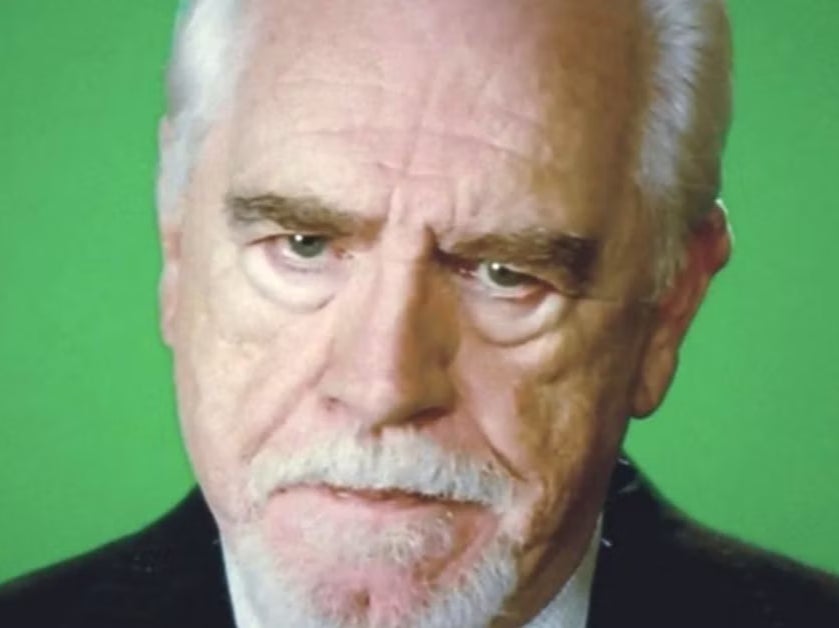Logan Roy’s disturbing Succession comeback is too close to reality for comfort
With its sophisticated dialogue and heightened drama, the HBO drama can seldom be mistaken for reality. But the queasy ‘return’ of Brian Cox’s character reflects one of the real world’s most troubling trends, writes Louis Chilton


Your support helps us to tell the story
From reproductive rights to climate change to Big Tech, The Independent is on the ground when the story is developing. Whether it's investigating the financials of Elon Musk's pro-Trump PAC or producing our latest documentary, 'The A Word', which shines a light on the American women fighting for reproductive rights, we know how important it is to parse out the facts from the messaging.
At such a critical moment in US history, we need reporters on the ground. Your donation allows us to keep sending journalists to speak to both sides of the story.
The Independent is trusted by Americans across the entire political spectrum. And unlike many other quality news outlets, we choose not to lock Americans out of our reporting and analysis with paywalls. We believe quality journalism should be available to everyone, paid for by those who can afford it.
Your support makes all the difference.Logan Roy is back from the dead. Three weeks after Succession’s monstrous patriarch made his sensational, unexpected exit from the series, episode six (“Living+”) begins with Brian Cox’s menacing visage front and centre. He’s not risen from the grave, of course. It quickly becomes clear that we are actually watching a video that Logan recorded before his death, announcing the launch of a hellish-sounding new business venture, Living+. The video, which sons Kendall (Jeremy Strong) and Roman (Kieran Culkin) are exhuming to launch the product themselves, offers nothing in the way of catharsis: the speech Logan reads is all corporate jargon and rote mission statements. (We do, at least, get one more delicious snapshot of Logan’s crocodilian personality, as he lashes out at instruction to be more upbeat – mirroring a recording-booth scene from season two in which Roman did similar.) In Succession, nothing is ever sacred, so it’s no surprise when Kendall has the video doctored to place inflated financial estimates in his father’s mouth, driving up the company share price.
Through deft sleight of hand, Succession has always excelled at selling us on the credibility of its world. We know, for instance, that real people do not speak like the characters on Succession – with Shakespearean pith, often stringing together whole conversations from nothing but highwire witticisms – or that the dysfunction of the real Murdoch family (one of the key inspirations for the Roys) does not have quite the same air of operatic farce. Succession takes reality and dials it up just enough to become compelling drama and indelible comedy. And yet, this latest episode, with its crass revivification of Logan Roy, is not remotely far-fetched. The scary thing about the fakery is just how real it feels.
At this point, the idea of re-appropriating a dead person’s speech or likeness is a very real phenomenon. Across the past two decades, there have been countless examples. Consider in 2010, when Tiger Woods used the voice of his late father in an advert for Nike. Or the SpecSavers TV commercials that re-subtitled footage of Edith Piaf singing, to make it look like she was promoting their product. In 2020, Kanye West gifted his then wife Kim Kardashian a hologram of her dead father, Robert. For what it’s worth, she claimed to love the present, saying she watched the “special surprise from heaven” over and over, “filled with emotion”. In a tragic way, Roman Roy, sat in the back of a car listening to an abusive video pastiche of his father criticising his “microdick”, can surely relate.
In the world of cinema, too, we have seen this sort of thing happen increasingly regularly, thanks to technological strides being made. Disney used digital effects and archive footage to give Carrie Fisher and Peter Cushing roles in Rogue One: A Star Wars Story and The Rise of Skywalker, despite both having passed away. Ghostbusters: Afterlife also“brought back” the late Harold Ramis for an unsavoury cameo. Naturally, the rise of these unsettling AI resurrections has sparked all sorts of concerns – about the potential for misinformation; about the danger it poses to performers; about the dicey ethics of it all. And yet, it seems we are destined to continue down this road. Certain companies are already working on the technology to digitally re-create deceased loved ones through AI; it’s only a matter of time before this turns from a Black Mirror episode into reality.
In Succession, the idea of Living+ ties into these ideas. The Living+ “product” – as Kendall constantly refers to it – is initially billed as “cruises, but on land” (a particularly fraught simile, given the cruiseline rape-and-murder-coverup scandal that previously enveloped WayStar Royco). As Kendall outlines in his speech, though, the idea is more than this: it’s some kind of technology-augmented residential community, targeting the elderly. The selling point that he latches onto, inevitably, is the idea of living forever – the suggestion that “Living+” will be able to extend your life, whether through medical breakthroughs, or some kind of technological afterlife.
But, of course, this will never be the case. Living+ is nothing but empty words and meaningless promises. Logan, the real Logan, is gone: he has snarled his last “f*** off”. Succession is smart enough to know that no one can buy their way out of death. That’s more than we can say for some people in the real world.



Join our commenting forum
Join thought-provoking conversations, follow other Independent readers and see their replies
Comments